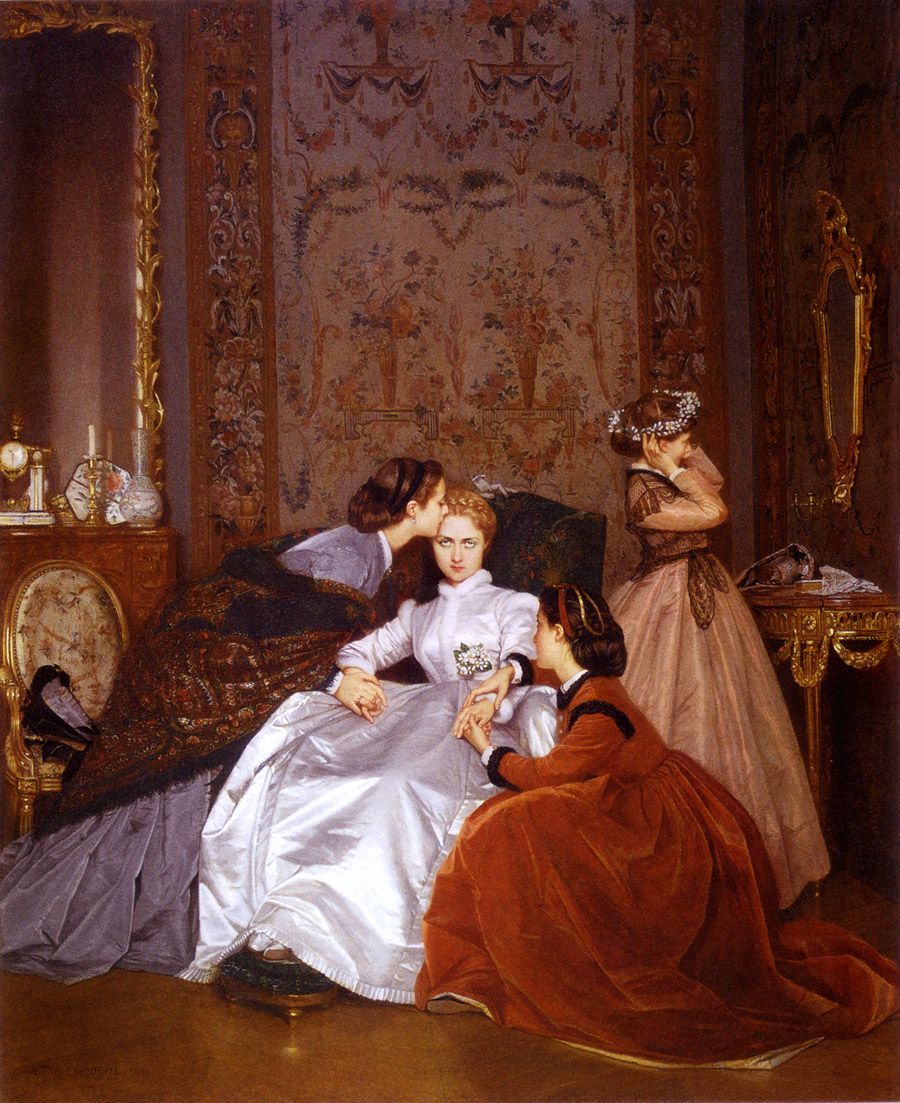Historians and art researchers have found that, beneath the surface, renaissance paintings are more than the artists' emotions, as well as artwork confined in the shackles of societal pressure. Researchers discovered the symbolic meanings of paintings and the hidden language artists use to get messages across, that otherwise wouldn't be acceptable.
1.
 |
| The Ghost Pianist |
The first image is of a woman casting a white glow over her suroundings, playing the piano in a dark room. Going by the man's expression and the diaphanous fabric in her dress the woman is dead and possibly the artist's wife; the man illustrated is the artist due to the papers on his desk. Furthermore, we can see a lit lamp in the corner of the room, which signifies wisdom and purity, we can also see the overall untidiness of the room that is symbolic to the loss the artist suffered after this woman's death.
2.
| Unfair Marriage |
This painting illustrates an old man and a young woman's marriage and is considered to be one of the most detailed paintings in terms of symbolism. Firstly one might notice the bearded man in the corner who is actually the painter and was in love with the bride himself and is not looking at her, but the man about to marry her. Then, far in the back we notice two old women with dead flowers in their hair, they are the man's dead wives which highlights how old he is. After that, when we take a look at the bride, we firstly notice the flowers braided in her hair which are a symbol for her youth and that her eyes are red, an indication that she has been crying.
We can also notice a red haired man who is the artist's friend, based on his expression, he is showing concern and sympathy to his friend. Overall all the people standing at the bride's side are sad for her while the people at the groom's side are older and happier, that goes to show the difference between their individual points of view.
3.
 |
| The Hesitant Fiancee |
The hesitant fiancee is the type of artwork to make you feel, not just see, aside from the admirable depiction of rage in the bride's face, due to the arranged marrriage she was forced into, in the renaissance French Society. If we look into this painting further, hundreds of stories unfold; Firstly, we notice the young girl in the corner, posing in front of the mirror with the bride's headdress, fantasizing about her own wedding day, oblivious to her sister's pain, or the expectations of her time, however we don't see her reflection in the mirror, so that means she is dead. After that we can see another woman in a crimson dress, who seems to be the only person recognizing the bride's pain, when everyone else only cares for themselves, the mother wants a good reputation and the little girl a fair chance at life.
Sources;
- Reddit; r/Art history
- Wikipedia
Wow so interesting. Let me send my art teacher.🤣
ReplyDeleteWhat a beautiful and special text!
ReplyDeleteLet's go strong! ΝΕΦΕΛΗ🐝
Very interesting article. Good job!
ReplyDeleteThis is a fascinating article! I love how you dive into the symbolism hidden within these famous Renaissance paintings. It really makes you appreciate the depth and complexity of these works of art. I especially found your analysis of 'The Unequal Marriage' intriguing, with all the details like the dead flowers and the contrasting emotions of the two sides. It's like a whole story is being told within the painting itself. This article definitely makes me want to learn more about the hidden meanings in other Renaissance artworks. 👏👏👏
ReplyDeleteI learned so much from this article! Well done 👍
ReplyDeleteΗ τέχνη μιμείται την φύσιν.
ReplyDeleteΑριστοτέλης
I loved it! I cant wait to read more from you <3
ReplyDeleteSo informative article!!!well done
ReplyDelete